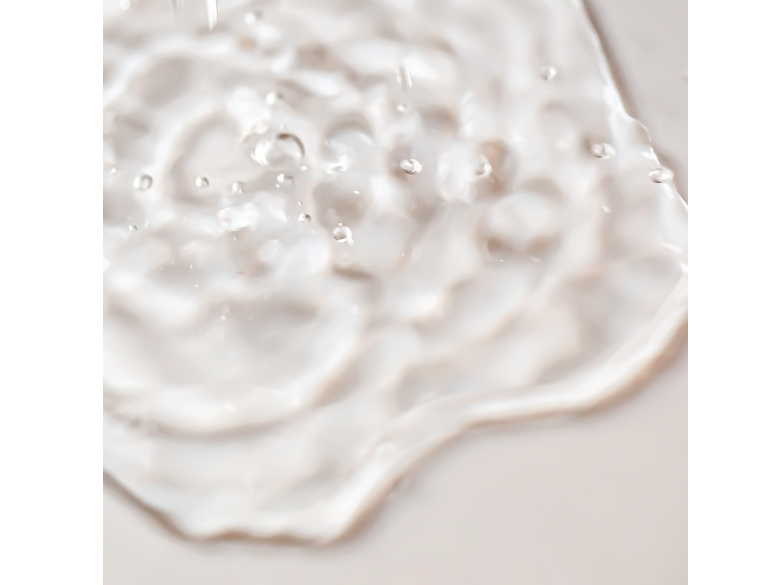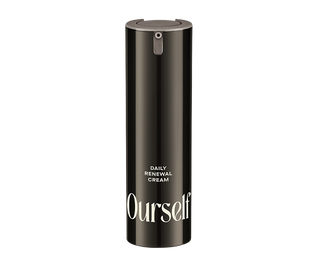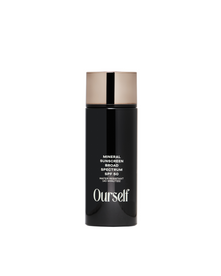
Of all the powerful ingredients in the skincare world, few others have gained recent popularity–and enjoyed longtime staying power—quite like vitamin c and retinol. With seemingly endless benefits, you might think combining these two in your skincare routine would be a no-brainer.
However, just like with any skincare containing acids or similarly potent active ingredients, mixing retinol and vitamin c together could trigger an unwanted reaction—especially if you have sensitive skin. Read on to learn more and discover our complete guide for safely and effectively using retinol and vitamin c together.
What Is Vitamin C?
Topical vitamin c, frequently seen infused into a plethora of skincare products, is one of the most powerful, multi-faceted skincare ingredients you can include in your regimen. Highly recommended by dermatologists, vitamin c can help mitigate sun damage, minimize the look of fine lines and other signs of aging, and help with brightening the look of dark spots and pigmentation issues.
Studies have shown that consistent use of a topical vitamin c product over three months can visibly refine skin texture, combat wrinkles, and improve overall skin appearance. Vitamin c can also help defend your skin against free radicals, which are harmful molecules that can contribute to skin issues like uneven skin tone, dull skin, and poor cell turnover.
What Is Retinol?
Retinol is a derivative of vitamin a. Retinol specifically is available over the counter with no prescription needed.
Retinoids, an entirely different product, are a bit more powerful and require a prescription (more on that later). A formidable ingredient, the benefits of retinol products include unclogging pores, minimizing the look of breakouts, supporting collagen production, reducing the look of discoloration, and supporting normal skin cell regeneration. Retinol can help your skin look fresh, rejuvenated, plumper, and more vibrant.
What Should I Know About Using Vitamin C and Retinol?
Water-based skincare products are created to work at specific pH levels. Skincare without any water-based ingredients will not have a pH level. Whether professionally prescribed or purchased over the counter, retinol products generally have a pH level between 5.0 and 6.0.
In order for a vitamin c serum to properly absorb into your skin, it needs to have a pH level below 3.5. The active form of vitamin c, known as L-ascorbic acid, is the specific ingredient needed to be at this particular pH level.
Both of these products have a pretty large gap in pH levels. To illustrate this gap, most tap water will have a pH level of around 7.0, while black coffee has a pH level of around 5.0. Using both of these products at the same time may make your retinol less active while also making it more challenging for the vitamin c serum to penetrate into your skin. To put it simply, using vitamin c and retinol at the same time makes them worthless.
To take it a step further, many first-time users don’t know how their skin will react until they actually use the products. It’s better to start with brightening vitamin c, the less irritating of the two, before going all in and suffering a reaction.
Should Vitamin C or Retinol Be Used First?
Vitamin c should always go first because it has a lower pH level than retinol. In general, you should apply products with a lower pH level first, working up as you go.
Also, keep texture and formula in mind. Apply lighter, water-based products first before reaching for heavier oil-based ones. If you flip this order, the lighter, water-based products won’t have a chance to properly penetrate into your skin, making its application a bit of a lost cause.
This leads to one exception in the application rules. If your vitamin c face serum is free of any water and contains a higher concentration of oils, oily solvents, or silicon, apply your retinol first, then your vitamin c serum.
How Long Should You Wait Between Applications?
Unfortunately, it’s not a great idea to layer one product immediately after the other or mix them together. Again, this may lessen each ingredient’s potency and keep them from properly being absorbed into your skin.
You should generally break up the application process and wait a few minutes between steps to allow your skin to absorb each product. Pausing also allows your skin to return to its regular pH levels in between applications, assisting the products in working to their full potential, allowing your skin to reap the benefits.
Should I Use Vitamin C and Retinol During the Day or at Night?
If you don’t have time to wait in between applications, the easiest thing to do is to separate the two steps.
Generally, applying vitamin c serum in the morning and using retinol at night is an effective method. This is simply because vitamin c may help support your skin against sun damage, whereas retinol makes your skin more sensitive to the sun’s rays. Another option is applying one of the two products in the evening on alternating days.
You can also use a vitamin c derivative to cut out the wait time. Vitamin c derivatives offer the same benefits but have to be converted into their active form, which happens when it’s applied to your skin. Vitamin c derivatives may not be as strong as the real thing but can be less harsh on your skin while still delivering a great deal of the same benefits.
Again, experts generally recommend and encourage you to use retinol at night when you won’t be exposed to stressors like the sun’s rays. Retinols and retinoids are particularly unstable when exposed to UV rays, breaking them down and rendering them ineffective.
Vitamin c is a great product to also use in the evenings, though, as it is thought that our skin continues to break down for hours after exposure to UV rays. The regular use of an antioxidant, like vitamin c, may help prevent this type of damage.
How Should I Get Started Using Retinol?
When first setting out on the retinol journey, you might ask yourself whether you should opt for retinol or a retinoid. A retinol is where most people start since it is easily available over the counter from both luxury and drugstore skincare brands.
Retinoids, on the other hand, are only available by prescription from a dermatologist. Even most beginners seeking a dermatologist prescription may be told to try retinol before harsher retinoids to gauge how their skin reacts. This is the best way to avoid harsh irritation, burning, and excessive discomfort.
You should follow the same rule here, particularly when mixing these two powerful ingredients, especially if you are a first-time user of either of these products. Start with a light application at first, only applying every other day.
One common side effect of retinol use is flaking or dryness. It’s for this reason that it may be a better idea to start retinol use in the warmer months as opposed to the drier, colder season. Warm air naturally has more humidity and moisture, giving you a bit of help during the initial adjustment phase when compared to starting out during the winter when humidity rates are often at all-time lows, and your skin may be experiencing dryness.
How Can I Protect My Skin During Retinol Use?
If at any time you use retinol during the day, you should take ample steps to avoid direct contact with UV rays and protect yourself as much as possible—no matter your skin type.
This means staying indoors if you can. If this isn’t an option, apply at least SPF 30 level sunscreen, and add a wide-brim hat to your outfit to protect your face while you are using a formulation containing retinol.
Remember that sun damage can come from even the shortest windows of exposure, and can even occur through windows when you are staying indoors.
If your skin starts to look blistered, peels excessively, or becomes uncomfortable enough to distract you from your everyday life, take a few days off from using retinol and instead focus on properly moisturizing and nourishing your skin. The “less is more” rule applies to all skincare products, and is especially relevant when trying out new ingredients.
The Bottom Line
When it comes to experimenting with new skincare, particularly powerful products like vitamin c and retinol, it’s better to start slow instead of jumping into the deep end.
The right timing, dosage, and combinations can make all the difference in the world. When used in conjunction with a good SPF and a nourishing moisturizer like Ourself’s Daily Renewal Cream, these ingredients can help to attain glowing, vibrant, youthful skin.
Sources:
Why is topical vitamin C important for skin health?| Harvard Health
How long does it take to get a sunburn? | Arizona Department of Health Services

